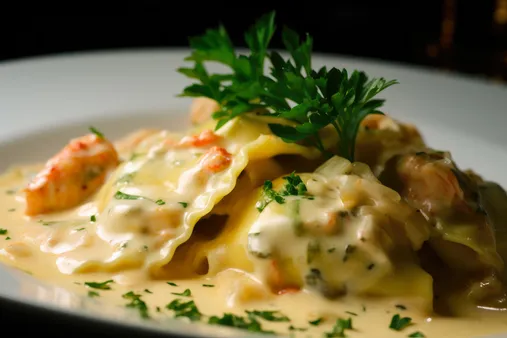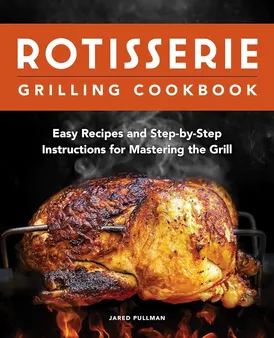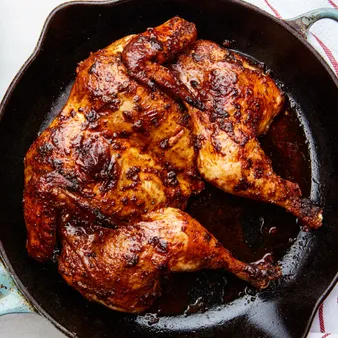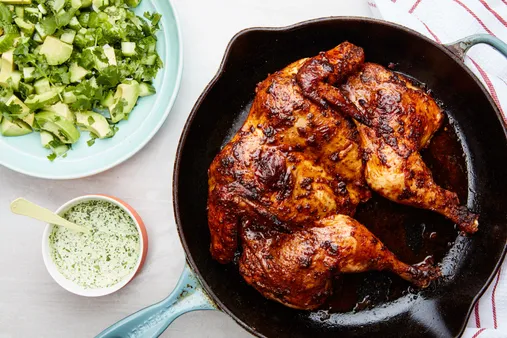Table of Contents
Welcome to the ultimate guide to mastering Peruvian sauces, brought to you by Tauhuichiban. In this comprehensive guide, we'll delve into the secrets of Peruvian cuisine, providing you with the tips and tricks you need to create authentic and flavorful Peruvian sauces that will transform your dishes. From the essential ingredients to the intricate techniques, we'll cover everything you need to know to master the art of Peruvian sauces.

The Tips and Tricks for Mastering Peruvian Sauces
I. Mastering the Art of Peruvian Sauces: A Culinary Journey
The Essential Ingredients for Peruvian Sauces
- Ají peppers: These peppers are the backbone of many Peruvian sauces, providing a range of heat levels from mild to fiery.
- Garlic: Garlic is another essential ingredient, adding a savory and aromatic flavor to sauces.
- Onions: Onions provide a sweet and slightly pungent flavor to sauces, and they also help to thicken them.
- Tomatoes: Tomatoes are used in many Peruvian sauces, adding a tangy and acidic flavor.
- Cumin: Cumin is a warm and earthy spice that is often used in Peruvian sauces.
- Oregano: Oregano is a fragrant herb that adds a fresh and herbaceous flavor to sauces.
- Salt and pepper: Salt and pepper are essential for seasoning sauces to taste.
The Techniques for Making Peruvian Sauces
- Sautéing: Sautéing is a technique in which ingredients are cooked in a pan with a small amount of oil over medium heat. This technique is often used to cook the vegetables in Peruvian sauces.
- Blending: Blending is a technique in which ingredients are pureed until smooth. This technique is often used to make creamy or smooth sauces.
- Simmering: Simmering is a technique in which ingredients are cooked in a liquid over low heat for a long period of time. This technique is often used to develop the flavors in Peruvian sauces.
The Different Types of Peruvian Sauces
Type of Sauce | Description |
|---|---|
Ají Amarillo Sauce | Ají amarillo peppers are the main ingredient in this sauce, which has a bright yellow color and a slightly spicy flavor. |
Ají Panca Sauce | Ají panca peppers are the main ingredient in this sauce, which has a deep red color and a slightly smoky flavor. |
Ají Rocoto Sauce | Ají rocoto peppers are the main ingredient in this sauce, which has a bright red color and a very spicy flavor. |
Salsa Criolla | Salsa criolla is a fresh and tangy sauce made with onions, tomatoes, cilantro, and lime juice. |
Ocopa Sauce | Ocopa sauce is a creamy and nutty sauce made with walnuts, cheese, and milk. |
The Uses of Peruvian Sauces
- Peruvian sauces can be used to add flavor to a variety of dishes, including meats, seafood, vegetables, and rice.
- Sauces can also be used as a dipping sauce for appetizers or snacks.
- Some Peruvian sauces, such as salsa criolla, can be used as a condiment to add flavor to dishes.
The History of Peruvian Sauces
Peruvian sauces have a long and rich history, dating back to the Incan Empire. The Incas used a variety of sauces to flavor their food, including sauces made with ají peppers, tomatoes, and herbs.
After the Spanish conquest of Peru, Peruvian sauces began to incorporate influences from Spanish cuisine. This led to the development of new sauces, such as ocopa sauce, which is made with walnuts and cheese.
The Culture of Peruvian Sauces
Peruvian sauces are an important part of Peruvian culture. They are used to add flavor to food, and they are also used to express the country's diverse culinary traditions.
There are many different types of Peruvian sauces, each with its own unique flavor and history. These sauces are a reflection of the country's rich and diverse culture.
The Future of Peruvian Sauces
The future of Peruvian sauces is bright. As Peruvian cuisine becomes more popular around the world, so too will the demand for Peruvian sauces.
Peruvian chefs are constantly innovating and creating new sauces, and there is no doubt that the future of Peruvian sauces is full of flavor.

Mastering the Art of Peruvian Sauces: A Culinary Journey
II. Essential Ingredients and Techniques for Peruvian Sauce Mastery
Peruvian sauces are a vibrant and flavorful expression of the country's rich culinary heritage. Mastering these sauces requires a deep understanding of the essential ingredients and techniques involved. In this section, we will delve into the building blocks of Peruvian sauces, providing you with the knowledge and skills to create authentic and delectable sauces that will elevate your dishes to new heights.
One of the most important ingredients in Peruvian sauces is the aji pepper. Aji peppers come in a variety of colors and heat levels, and each type imparts a unique flavor to the sauce. The most commonly used aji peppers in Peruvian cuisine include the aji amarillo, aji panca, and aji mirasol. These peppers are typically dried and ground into a powder, which is then used to create a flavorful base for the sauce.
Type of Aji Pepper | Color | Heat Level | Flavor Profile |
|---|---|---|---|
Aji Amarillo | Yellow | Mild to medium | Fruity and slightly sweet |
Aji Panca | Red | Mild | Smoky and earthy |
Aji Mirasol | Red | Mild | Sweet and slightly fruity |
In addition to aji peppers, Peruvian sauces often incorporate a variety of other ingredients, such as onions, garlic, tomatoes, and cilantro. These ingredients provide a balance of flavors and textures, creating a complex and harmonious sauce. The techniques used to prepare Peruvian sauces are just as important as the ingredients themselves. One of the most common techniques is the use of a blender. Blending the ingredients creates a smooth and velvety texture, which is essential for many Peruvian sauces.
Another important technique is the use of a mortar and pestle. This method is used to grind the aji peppers and other spices into a fine powder. This powder is then added to the sauce, infusing it with a rich and flavorful base. Mastering the essential ingredients and techniques for Peruvian sauce mastery is a journey that requires patience and practice. However, with dedication and a passion for Peruvian cuisine, you can unlock the secrets of these vibrant and flavorful sauces and create authentic and delectable dishes that will impress your family and friends.

Essential Ingredients and Techniques for Peruvian Sauce Mastery
III. Exploring the Diverse Flavors of Peruvian Sauces
Peruvian cuisine is renowned for its vibrant flavors, and its sauces play a crucial role in enhancing the taste of its dishes. From the spicy and tangy Ají Amarillo to the creamy and nutty Huancaína, Peruvian sauces offer a wide range of flavors to tantalize your taste buds. In this article, we will delve into the diverse world of Peruvian sauces, exploring their ingredients, preparation methods, and the dishes they complement.
One of the most popular Peruvian sauces is Ají Amarillo, a spicy and flavorful sauce made from yellow chili peppers. This sauce is commonly used to marinate meats, add a kick to soups and stews, and as a dipping sauce for appetizers. Another beloved sauce is Huancaína, a creamy and nutty sauce made from fresh cheese, evaporated milk, and aji amarillo peppers. Huancaína is often served with boiled potatoes, grilled meats, and as a topping for empanadas.
Sauce | Ingredients | Uses |
|---|---|---|
Ají Amarillo | Yellow chili peppers, onion, garlic, cumin, salt | Marinating meats, soups, stews, dipping sauce |
Huancaína | Fresh cheese, evaporated milk, aji amarillo peppers, salt | Boiled potatoes, grilled meats, empanadas |
Ocopa | Yellow chili peppers, walnuts, cheese, garlic, onions | Potatoes, meats, salads |
Salsa Criolla | Red onions, tomatoes, cilantro, lime juice | Ceviche, grilled meats, fish |
Rocoto Relleno | Rocoto peppers, ground beef, onions, garlic, cheese | Stuffed peppers, soups |
Another popular Peruvian sauce is Ocopa, a flavorful sauce made from yellow chili peppers, walnuts, cheese, garlic, and onions. Ocopa is often served with potatoes, meats, and salads. For a refreshing and tangy sauce, try Salsa Criolla, made from red onions, tomatoes, cilantro, and lime juice. Salsa Criolla is commonly used as a topping for ceviche, grilled meats, and fish.
For those who enjoy a spicy and bold sauce, Rocoto Relleno is a must-try. This sauce is made from rocoto peppers, ground beef, onions, garlic, and cheese. Rocoto Relleno is often used to stuff peppers and add a kick to soups.
These are just a few examples of the diverse range of sauces that Peruvian cuisine has to offer. Each sauce has its own unique flavor and purpose, adding depth and complexity to Peruvian dishes. Whether you prefer spicy, creamy, tangy, or bold flavors, there is a Peruvian sauce that will tantalize your taste buds and enhance your culinary experience.

Exploring the Diverse Flavors of Peruvian Sauces
IV. Tips and Tricks for Enhancing Your Peruvian Sauce Creations
Use a Variety of Ingredients
Peruvian cuisine is known for its diverse flavors, and this is largely due to the variety of ingredients used in its sauces. Some of the most common ingredients include tomatoes, onions, garlic, peppers, cilantro, and cumin. Don't be afraid to experiment with different combinations of these ingredients to create your own unique sauces.
Cook Your Sauces Slowly
One of the key to making great Peruvian sauces is to cook them slowly over low heat. This allows the flavors to develop and deepen, and it also helps to prevent the sauces from burning. A good baseline is to cook your sauce for at least 30 minutes.
Experiment with Different Spices
Spices play a vital role in Peruvian cuisine, and they can be used to add depth and complexity to your sauces. Some of the most commonly used spices include cumin, coriander, paprika, and oregano. Feel free to experiment with different combinations of spices to find the ones that you like best. Spices are a great way to make your sauce unique, explore different combinations to bring out new flavors.
Add a Touch of Acidity
A little bit of acidity can help to balance out the flavors in your Peruvian sauce. This can be achieved by adding a squeeze of lemon juice, a splash of vinegar, or a bit of white wine. Acidity can also cut through the richness of the sauce, making it more refreshing. The Tips and Tricks for Mastering Peruvian Sauces
Don't Be Afraid to Experiment
The best way to learn how to make great Peruvian sauces is to experiment. Don't be afraid to try different ingredients, spices, and techniques. The more you experiment, the better you'll become at making delicious sauces.
Ingredient | Description |
|---|---|
Tomatoes | Tomatoes are a key ingredient in many Peruvian sauces. They provide a base of flavor and sweetness. |
Onions | Onions add depth and complexity to the flavor of sauces. |
Garlic | Garlic adds a savory and aromatic flavor to sauces. |
Peppers | Peppers add heat and spice to sauces. |
Cilantro | Cilantro adds a fresh and herbaceous flavor to sauces. |
Cumin | Cumin is a warm and earthy spice that is commonly used in Peruvian sauces. |
Coriander | Coriander is a citrusy and aromatic spice that is often used in Peruvian sauces. |
Paprika | Paprika is a sweet and smoky spice that is used to add color and flavor to sauces. |
Oregano | Oregano is a herbaceous and slightly bitter spice that is often used in Peruvian sauces. |

Tips and Tricks for Enhancing Your Peruvian Sauce Creations
V. Conclusion
Mastering Peruvian sauces is a culinary journey that rewards exploration and experimentation. By embracing the essential ingredients, techniques, and cultural influences, you can create authentic and flavorful sauces that will transform your dishes into extraordinary culinary experiences. Whether you're preparing a traditional Peruvian dish or experimenting with fusion cuisine, Peruvian sauces offer a vibrant and versatile canvas for your culinary creativity. As you continue to explore the world of Peruvian sauces, remember to honor the rich history and traditions that have shaped these culinary treasures. With each sauce you create, you not only enhance your dishes but also connect with the vibrant culture and heritage of Peru.